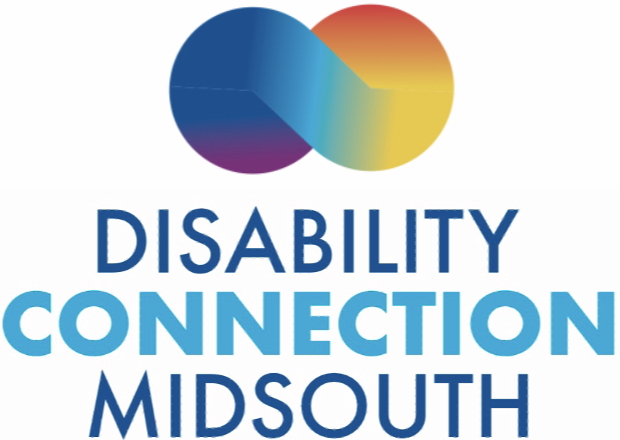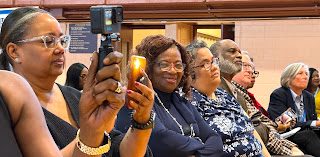EDITOR'S NOTE: The Latonya Reeves Freedom Act was introduced by Memphis Congressman Steve Cohen. This Blog answers many questions people have about the bipartisan legislation and why, in 2024, this is an important time to support this bill.
I. Why We Need the Latonya Reeves Freedom Act
The Supreme Court’s Olmstead decision doesn’t protect everyone from unwanted institutionalization. Olmstead is an interpretation of Title II of the Americans with Disabilities Act which covers state and local government. Although most people receive Long Term Services and Supports (LTSS) through Medicaid which is covered under Title II, not everyone does. For example, some people may receive LTSS through insurance companies funded by private equity. Because those entities are not covered by Title II of the ADA, Olmstead doesn’t apply to those individuals.
Under Olmstead, treating professionals are the gatekeepers of Disability Freedom. Twenty-five years ago, the Supreme Court ruled in Olmstead that a Disabled individual had a right to receive services in the most integrated setting when treatment professionals determine that community placement is appropriate. That means under Olmstead treating professionals can deny a Disabled individual of their right to live in freedom.
Olmstead was a historic decision, but we have made limited progress and, in fact, have lost some ground. Our community celebrated 25 years of the Olmstead decision this year, and although funding for community-based services has increased and people have moved into the community because of the decision, we cannot deny that a quarter of a century later Disabled individuals continue to be locked away in institutions.
Let’s look at the numbers. According to the US Census, in 2000, a year after Olmstead was decided, there were 1.72 million people in nursing facilities according to the US Census. Twenty years later, in the 2020 census, that number only dropped to 1.68 million people. That’s a small reduction (4.8%) over two decades post Olmstead, but – even worse – over those two decades the number of people under age 65 in nursing facilities increased by 53.0%!
States are not required to create new programs under Olmstead. Although Title II requires that states reasonably accommodate Disabled individuals, states are not required to fundamentally alter their programs or create new services. That means states do not need to change eligibility requirements, establish new waivers, or create new services if they aren’t already in place – even if that means Disabled individuals are forced into institutions. As an example, a Deafblind individual may require the assistance of a Support Service Provider to avoid going into an institution, but the state is not required to establish a program to provide such services under Olmstead.

The Olmstead decision and other federal legislation don’t address the problem that Disabled people in the community who use Long Term Services and Supports (LTSS) can still be forced to go to congregate settings. LTSS provided in the community can be restrictive, and Disabled people can be legally forced to go to congregate settings to get assistance with using the bathroom or eating a mid-day meal. Others find themselves institutionalized in their own home by policies and systems – including Electronic Visit Verification – that restrict their freedom. This prevents Disabled people from pursuing education or employment and generally participating as full members of society. The Olmstead decision and other federal legislation don’t address the problem that Disabled people in the community who use Long Term Services and Supports (LTSS) can be denied assistance they need to lead a full life. Medicaid-funded LTSS provides medically necessary assistance – getting folks in and out of bed, bathed and dressed – but life is more that meeting one’s basic needs. Life includes caring for their children and pets, but Medicaid rules often prevent people from utilizing their services for these functions. People should not be denied these joys because they are disabled!
Olmstead doesn’t address emergent needs. During the pandemic, advocates were not successful in utilizing the Olmstead decision to support people leaving institutions to protect themselves. Research from Connecticut demonstrated that the vast majority of the hundreds of thousands of Disabled people who died in nursing facilities would have lived if they had an opportunity to get services and supports in the community.
Finally, the Supreme Court is poised to overturn Olmstead and reverse all of the progress we have made in securing Disability Freedom. Although Olmstead may not have been the strongest decision we could have hoped for in 1999, we have made advances using it. Even so, the Supreme Court is poised to overturn the decision and wipe out the gains we have made.
Justice Clarence Thomas – in his Olmstead dissent – described exactly how he would reverse Olmstead. The Supreme Court has been very clear that it is willing to roll back decades of precedent and Justice Thomas now would have enough votes to turn his Olmstead dissent into the law of the land. The Biden Administration tried to address this by writing and finalizing the Health and Human Services 504 rules to bolster the Olmstead decision, but less than a month later – in the Loper decision – the Supreme Court reversed the Chevron doctrine cleared the way for the courts to ignore those rules and reverse Olmstead. That makes the Latonya Reeves Freedom Act (LRFA) even more important.
The Latonya Reeves Freedom Act addresses all of these issues and protects people with ALL types of disabilities by establishing our right to live in freedom in federal statute. It prohibits states and LTSS insurance providers from using waiting lists, cost or service caps, and inadequate rates to restrict access to home and community-based services… and more.
II. Current Status on the Bill
A majority of the House has signed on as cosponsors of the Latonya Reeves Freedom Act.
Even though 16 House Republicans cosponsored the legislation, and the Energy and Commerce Chair was willing to hold a hearing, Republican Leadership in the House has refused to allow the bill to get a hearing which will allow it to advance to the floor for a vote. This means that, even with broad-based bipartisan support, the bill is “stuck” in Committee.
Representative Steve Cohen – House sponsor of the Latonya Reeves Freedom Act – filed paperwork that authorizes him to initiate a Discharge Petition which would send the Latonya Reeves Freedom Act to the floor of the House for a vote. A Discharge Petition is a mechanism the House of Representatives uses when a bill is not able to move through the committee process even though a majority of the members of the House support it. When 218 members of the House sign the Discharge Petition, the bill will bypass the committees and go to the floor of the House for a vote.
The Discharge Petition was supposed to become active before Congress left for break, but the House went out of session two days early. The Discharge Petition will open for signatures when Congress returns into session in November. This is an incredible opportunity. The legislation would bypass the committee and markup, going to the House floor for an up-down vote. If every House Democrat support the Discharge Petition, we would only need to secure the support of 3 of the 15 Republican cosponsors who are still in Congress. It is almost certain that the legislation would pass if we secure enough signatures to move the bill to the floor for a vote.
This would solidify Congressional support for the bill’s language and set us up for success in the next Congress. There are implications beyond folks who can be institutionalized. Solidifying Democratic support through a Discharge Petition would address the issue – explained by Minority Leader Jeffries – that Disability Freedom is not considered a Democratic Caucus issue. He instructed us to get this issue to “bubble up” if we want Disability Rights – including our right to live in freedom to become part of “Democratic canon.”
III. Why the National Disability Leadership Alliance (NDLA) organizations should support LRFA
LRFA is the only federal legislation that addresses the civil right of Disabled people living in freedom. There is no other legislation in Congress that addresses the risk to Olmstead or establishes in statute that a Disabled individual has a right to live in freedom.
LRFA is the only federal legislation addressing the LTSS issue that is moving in the House of Representatives. The Latonya Reeves Freedom Act has 222 cosponsors in the House. Of those, 16 are Republican. We have a reserve of additional Democrats who have been previous cosponsors but not cosponsoring because they are in leadership positions.
In comparison, the HCBS Access Act (H.R. 1493) establishes permanent, mandatory funding for HCBS, expanding access and ensuring availability across states. The legislation has 12 Democratic cosponsors in the House. No Republicans support the legislation.
The HCBS Relief Act (H.R. 6296) temporarily increases the applicable Federal Medical Assistance Percentage under Medicaid for certain approved home- and community-based services that are provided during FY2024-FY2025. It has 5 Democratic cosponsors. No Republicans support the legislation.
The Better Care Better Jobs Act (H.R. 547) establishes programs and provides funds for state Medicaid programs to improve home- and community-based services (HCBS), such as home health care, personal care, case management, and rehabilitative services, increasing the Federal Medical Assistance Percentage for HCBS in states that develop plans and meet specified benchmarks for improvements. It has 100 Democratic cosponsors in the House. No Republicans support the legislation.
Individuals and organizations may prefer a different legislative approach, but we cannot let our preference or interpersonal issues impact the progress of our community.
LRFA is sponsored by a Disabled member of Congress – Representative Steve Cohen – who has close ties to the Disability Community. We have very few Disabled members of Congress. When a member of Congress with a disability advances disability rights legislation, our community should rally around it. LRFA has been advanced by Disabled people who are directly impacted by this issue. This legislation has been moved by Disabled individuals who utilize LTSS from across the country who have been working the Hill to FREE OUR PEOPLE. NDLA member organizations are likely unaware of this because ADAPT was removed from NDLA in 2019. That said, the group secured significant support during the last two Congresses. After 10 years, the legislation appears ready to pass. The NDLA organizations should uplift those in our community fighting for our rights.
IV. What you can do
Publicly urge Members of Congress to sign the Discharge Petition and publicly express appreciation for the members who do. The legislation has moved under the radar, so we understand that groups haven’t communicated much about it, but we need to come together now. NDLA can publish a letter supporting the legislation and urging its swift passage in the House. If we don’t work together on this, we will undermine our ability to move other Disability Rights legislation forward.
Explain the importance of this legislation to your constituencies. Every organization has members whose lives would be impacted by this legislation. Eliminating the fundamental alteration defense is a huge step forward for those who cannot access services to remain in the community. Pushing back against the ableism idea that some of us are “too Disabled” for freedom promotes the framework that all Disabled people have value and deserve freedom. Disability Freedom can propel us and our entire movement forward. We need to communicate that and mobilize our community.
Join us in celebrating the legislation and advancing the Discharge Petition. We are coordinating a Legislative Reception with the House sponsor in November and have begun planning for people to be in DC when the Discharge Petition moves the bill to the House floor.



















.jpg)
.jpg)
.jpg)
.jpg)